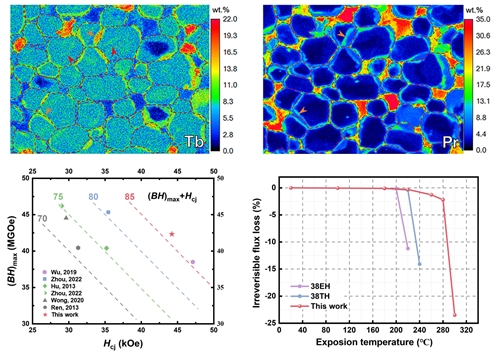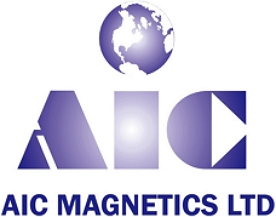Neodymium-iron-boron (NdFeB) permanent magnet materials, due to their excellent magnetic properties and high energy density, have become indispensable core components in fields such as wind power generation, new energy vehicles, and rail transportation. The changing technological requirements in these areas urgently require magnets to have high stability, high performance, and miniaturization. However, the poor temperature stability of sintered NdFeB magnets greatly limits their application to high-speed motors and precision instruments. Therefore, the research of NdFeB permanent magnets with ultra-high comprehensive performance is critically important to meet the high-temperature stability needs of industries such as new energy vehicles.
The coercivity (Hcj) is a key indicator of NdFeB magnet performance, reflecting the magnet’s ability to resist demagnetization due to external environmental changes and determining its operational stability. The maximum energy product (BH)max represents the energy density the magnet can store; a larger (BH)max allows smaller magnet devices under the same magnetic output requirements. However, coercivity and maximum energy product are two mutually limiting technical parameters, and simultaneously enhancing both is a challenge. In practical applications, as the total coercive force and maximum energy product of NdFeB magnets increase, they are gradually used in scenarios with higher service requirements, and the industry typically uses the value of (BH)max+Hcj to evaluate the magnet’s comprehensive magnetic performance.
Recently, a research team from China Ningbo Institute of Materials Technology & Engineering successfully developed NdFeB magnets with a total magnetic performance reaching 86.5((BH)max+Hcj), the highest reported value to date, using multi-component diffusion source design and stepwise grain boundary diffusion process technologies. With excellent comprehensive magnetic performance, the magnet’s maximum operating temperature exceeds 280℃, breaking the traditional temperature limit of NdFeB permanent magnets, and expanding their application areas to rail transit traction motors, high-frequency microwave devices, high-speed motors, etc.

Post time: Dec-19-2023
